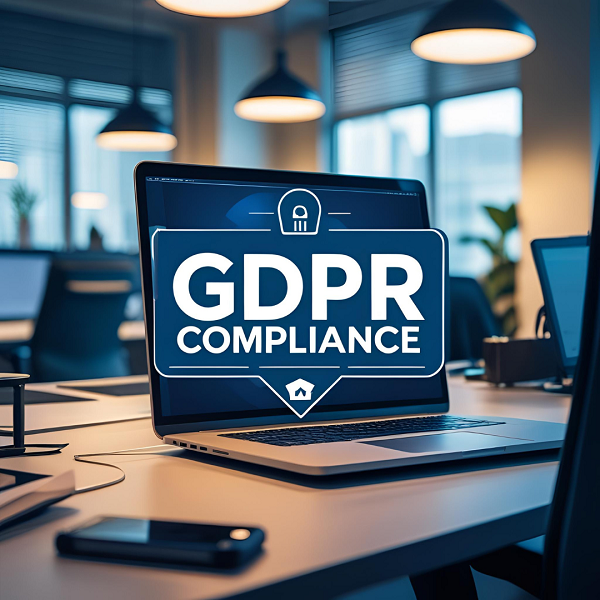The General Data Protection Regulation GDPR Email Marketing is a big deal. It changed how businesses handle personal information. This rule protects people’s privacy. It started in Europe. But it affects many businesses worldwide. If you send emails to people in Europe, GDPR applies to you. It’s about being fair and clear. You need to get permission to send emails. This makes sure people are in control.
Before GDPR, some rules were looser. Businesses could send emails more freely. Now, there are strict guidelines. You must know these rules. Following them keeps your business safe. It also builds trust with your customers. Ignoring GDPR can lead to big fines. So, it’s important to learn about it. This article will help you understand. We will break down key parts.
Why GDPR Matters for Everyone
GDPR is important for customers. It gives them more power. They can say yes or no to emails. They can also ask to see their data. . This is called the “right to be forgotten.” For businesses, it means being transparent. You must tell people how you use their data. You also need to protect their data. This builds a good reputation.
It’s not just about avoiding fines. It’s about good business practice. When customers trust you, they stay with you. They might even tell others about you. This can grow your business. So, thinking about GDPR is smart. It helps you treat people well. It also helps your business succeed. Therefore, understanding these rules is key.
Getting Proper Consent: The Golden Rule
Getting consent is crucial for GDPR phone list. Consent means clear permission. It must be specific and informed. It also needs to be unambiguous. You cannot assume someone wants your emails. They must actively agree. This is often done with a checkbox. The checkbox should not be pre-ticked. People must choose to tick it themselves.
You also need to tell people what they are agreeing to. For example, say “By ticking this box, you agree to receive our weekly newsletter.” Be very clear about what emails they will get. If you plan to send different types of emails, ask for separate consent. For instance, consent for newsletters and separate consent for product updates. This shows respect for their choices.
What Does Valid Consent Look Like?
Valid consent under GDPR has several parts. First, it must be easy to understand. Avoid legal jargon. Use simple language. Second, it must be separate from other terms. Don’t bury it in a long privacy policy. It should stand alone. Third, it must be verifiable. You should keep records of consent. This means knowing when and how someone gave consent.
You also need to offer an easy way to withdraw consent. People should be able to unsubscribe easily. This is usually an “unsubscribe” link. It should be in every email. When someone unsubscribes, remove them quickly. Do not keep sending them emails. This is a vital part of GDPR. Remember these steps for good consent.

Keeping Records of Consent
Keeping good records is a must. You need to prove consent. This means recording the date and time. Also, record the method of consent. For example, did they sign up on your website? Or at an event? Store this information securely. This proof is important if questions arise. It protects your business. It shows you followed the rules.
Therefore, set up a system for this. Your the communists adopted measures which they deemed platform might help. It should track consent details. Make sure these records are accessible. You might need to show them. This is a small but important step. It completes the consent process. Always keep your records updated.
Transparency and Your Privacy Policy
Being transparent is a core GDPR principle. This means being open. Tell people how you use their data. Your privacy policy is key for this. It needs to be easy to find. It should also be easy to read. Don’t hide important details. Be clear and honest.
Your privacy policy should state:
What data you collect.
Why you collect it.
How you use it.
Who you share it with (if anyone).
How people can access or change their data.
How people can withdraw consent.
It needs to cover all these points clearly. Regularly review your policy. Make sure it stays current. If your practices change, update the policy. Then, let your subscribers know. This builds trust. It also helps you comply with GDPR.
Data Security: Protecting Personal Information
Protecting personal data is crucial. GDPR requires you to keep data safe. This means preventing list provider unauthorized access. It also means preventing data loss. You need strong security measures. This applies to all data you hold. Email addresses are personal data. So, protect your email lists.
Use secure systems. This includes your email marketing platform. Make sure it is GDPR compliant. Use strong passwords. Train your staff on data security. Don’t share data carelessly. If you use third-party services, check their security. They must also meet GDPR standards. A data breach can be serious. It can lead to fines and loss of trust. So, prioritize security.
Responding to Data Subject Rights
Under GDPR, people have rights. These are called “data subject rights.” You must be ready to respond to them. These rights include:
Right to access: People can ask what data you hold about them.
They can ask you to correct wrong data.
Right to erasure: They can ask you to delete their data (“right to be forgotten”).
Right to restrict processing: They can ask you to limit how you use their data.
They can ask for their data in a usable format.
Right to object: They can object to you processing their data.
You need a process to handle these requests. Respond promptly. You usually have one month. Make it easy for people to make requests. Put information in your privacy policy. Ignoring these rights is a GDPR violation. So, be prepared to act.
Sending Emails: Content and Frequency
Even with consent, think about your emails. The content should match what they agreed to. If they signed up for newsletters, send newsletters. Don’t suddenly send sales pitches. This can annoy subscribers. It can also be seen as a breach of trust. Keep your promises.
Also, think about frequency. Don’t overwhelm people. Sending too many emails can lead to unsubscribes. Find a good balance. A weekly newsletter might be fine. Daily emails might be too much. Listen to your audience. Monitor your unsubscribe rates. High rates might mean you send too many emails. Always provide value in your emails.
International Data Transfers
If you send data outside the EU, be careful. GDPR has strict rules for this. This includes email lists stored on servers outside the EU. For example, if your email marketing platform is in the USA. You need to ensure adequate protection. This often involves specific agreements.
These agreements are called “Standard Contractual Clauses.” Or sometimes, other legal frameworks. Check with your email service provider. Make sure they comply with these rules. This is a complex area. It’s best to get expert advice if unsure. It helps you stay compliant. Therefore, look into this if you send data across borders.
What if You Break the Rules? Penalties and Fines
Breaking GDPR rules can be costly. The fines can be very large. There are two levels of fines. The lower level is up to €10 million or 2% of global annual turnover. The higher level is up to €20 million or 4% of global annual turnover. These are serious amounts. Fines depend on the severity. They also depend on how you tried to comply.
Beyond fines, there’s reputation damage. Customers lose trust. This can hurt your business more than money. It’s better to invest in compliance. This protects your brand. It also ensures customer loyalty. So, take GDPR seriously from the start.
Building a GDPR-Compliant Email Marketing Strategy
To sum up, build a strategy. Make GDPR a part of your marketing. Don’t see it as a hurdle. See it as an opportunity. It improves your data handling. It makes your marketing better. Start by reviewing your current practices.
Check your sign-up forms. Are they clear? Is consent explicit? Review your privacy policy. Is it easy to understand? Can people exercise their rights? Check your data security. Is it strong enough? Train your team. Everyone needs to know the rules. Make GDPR a habit. This will lead to long-term success.
